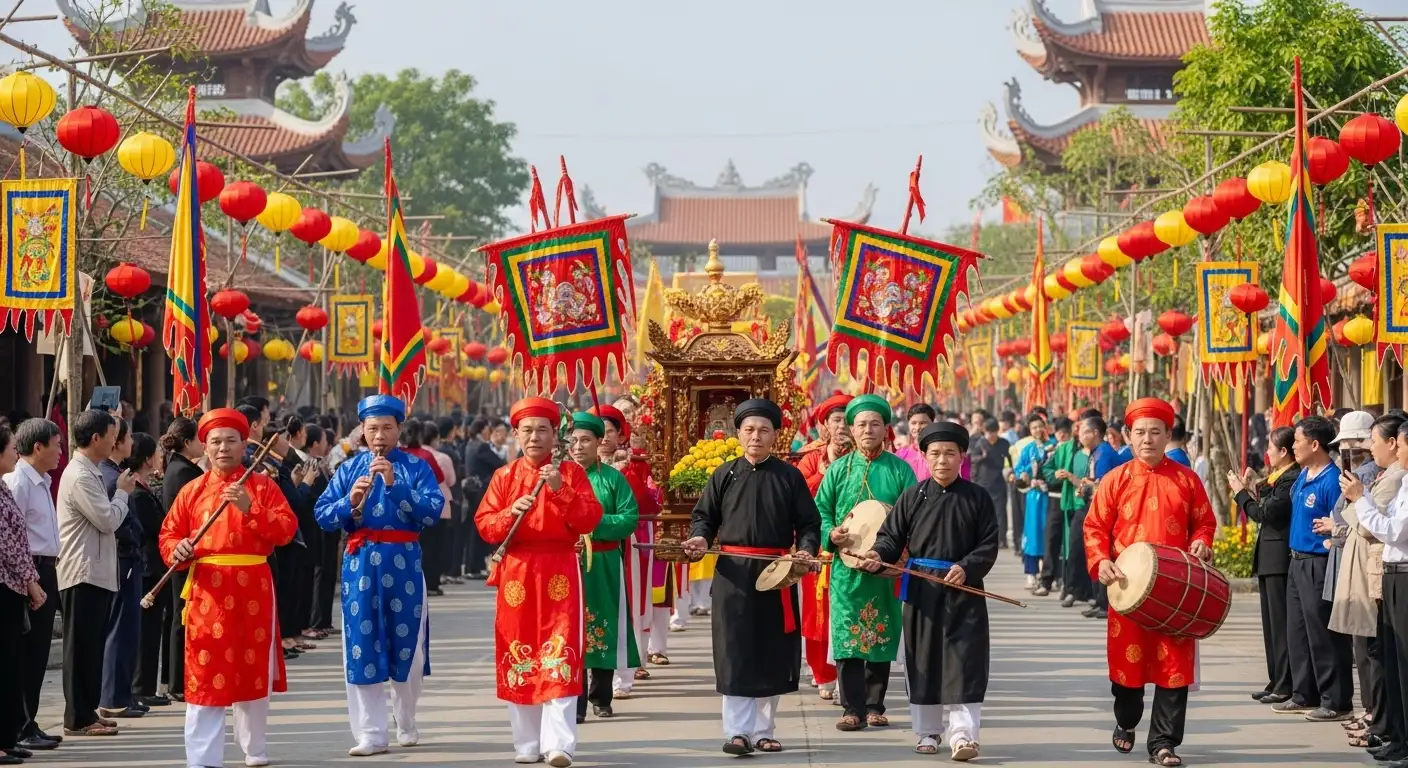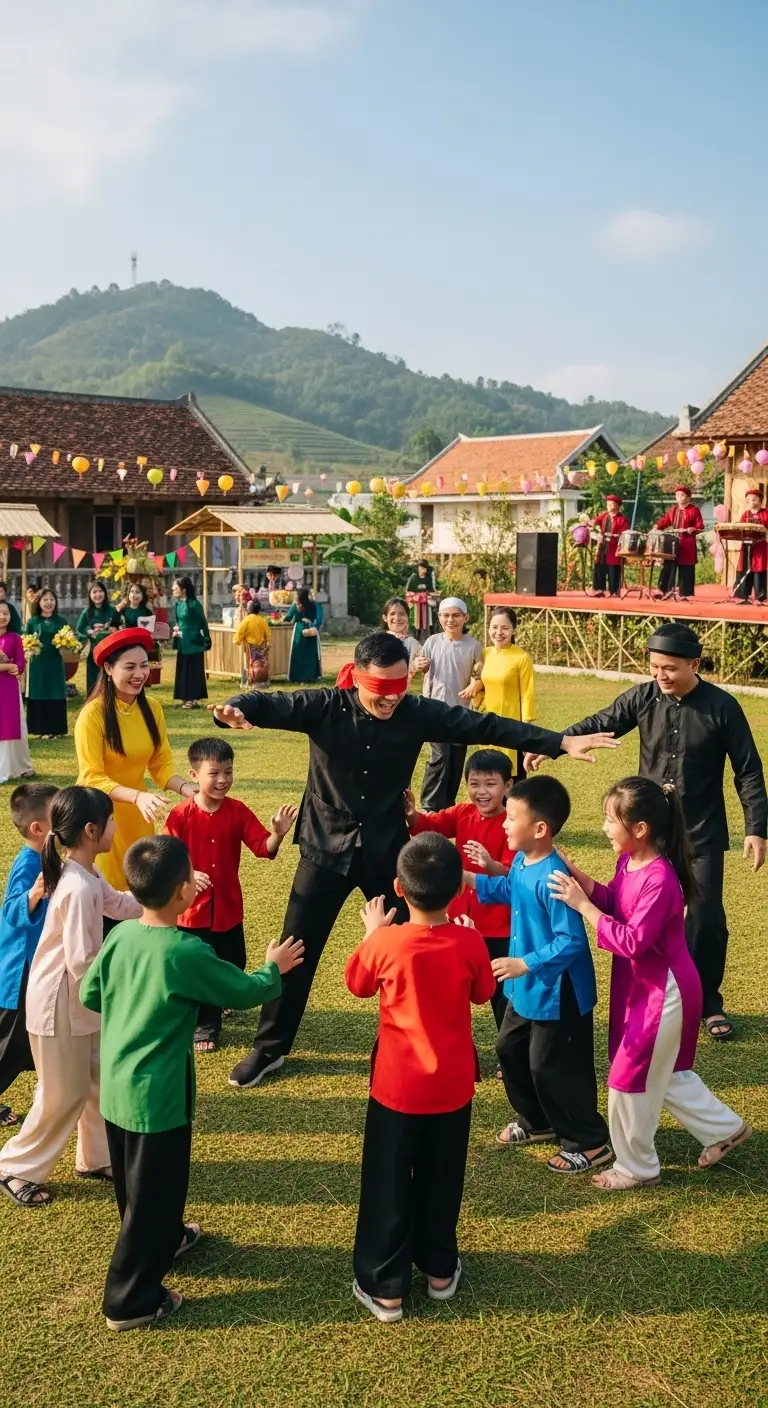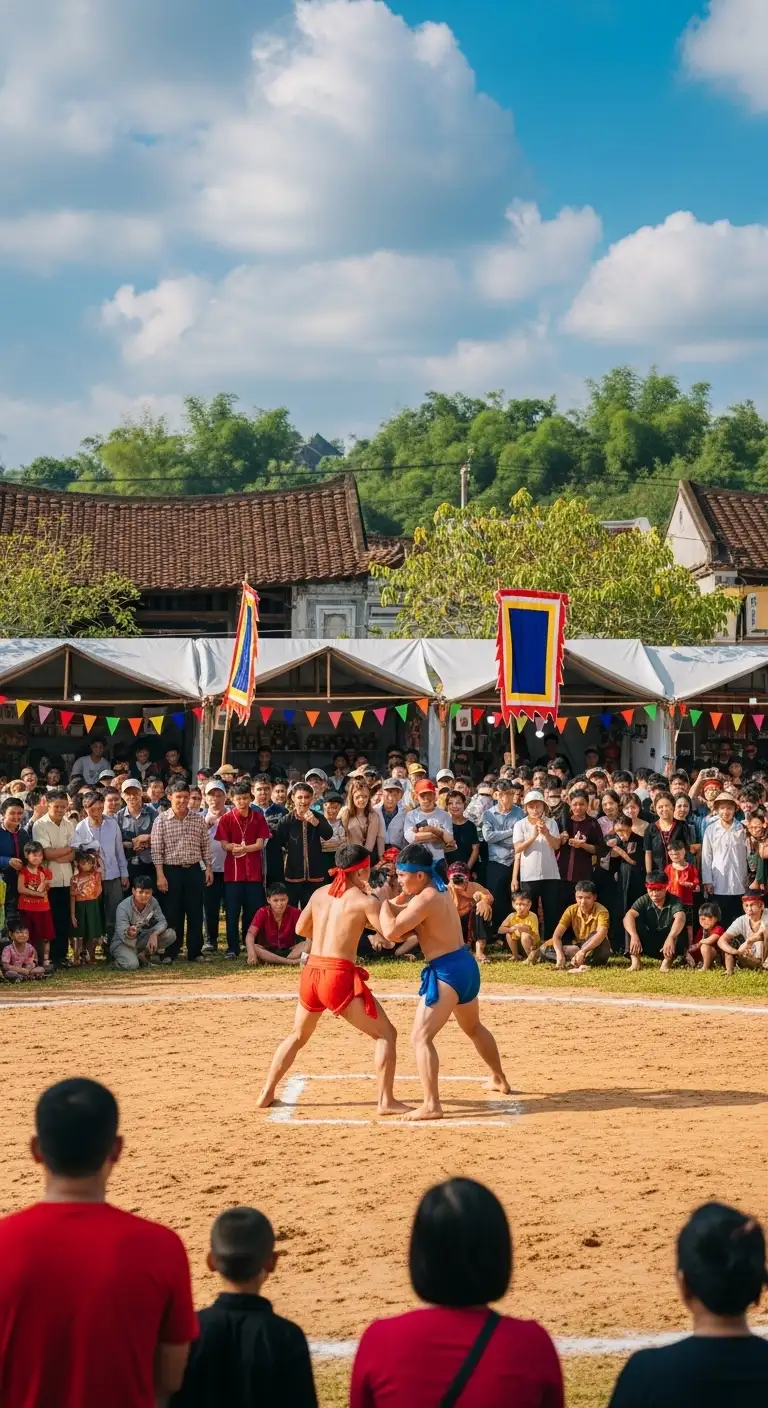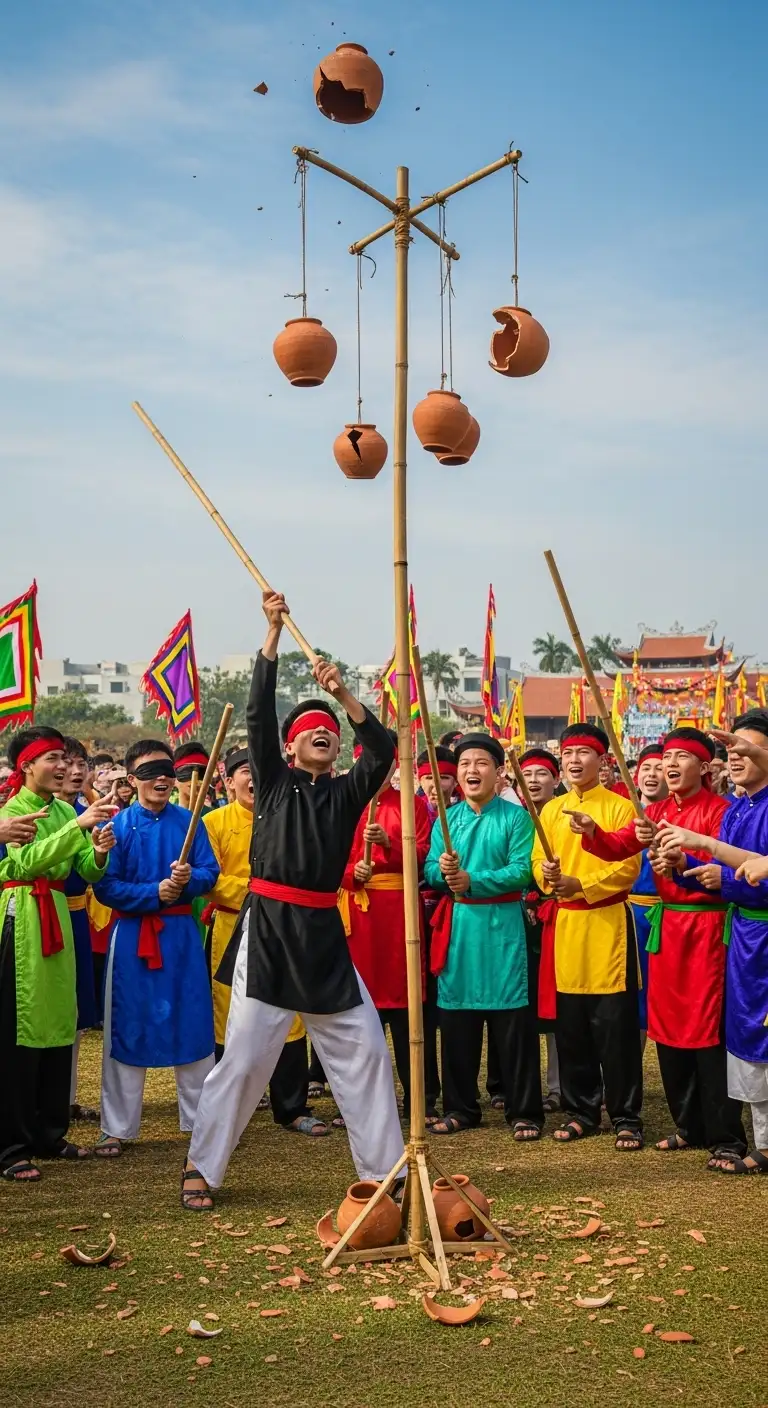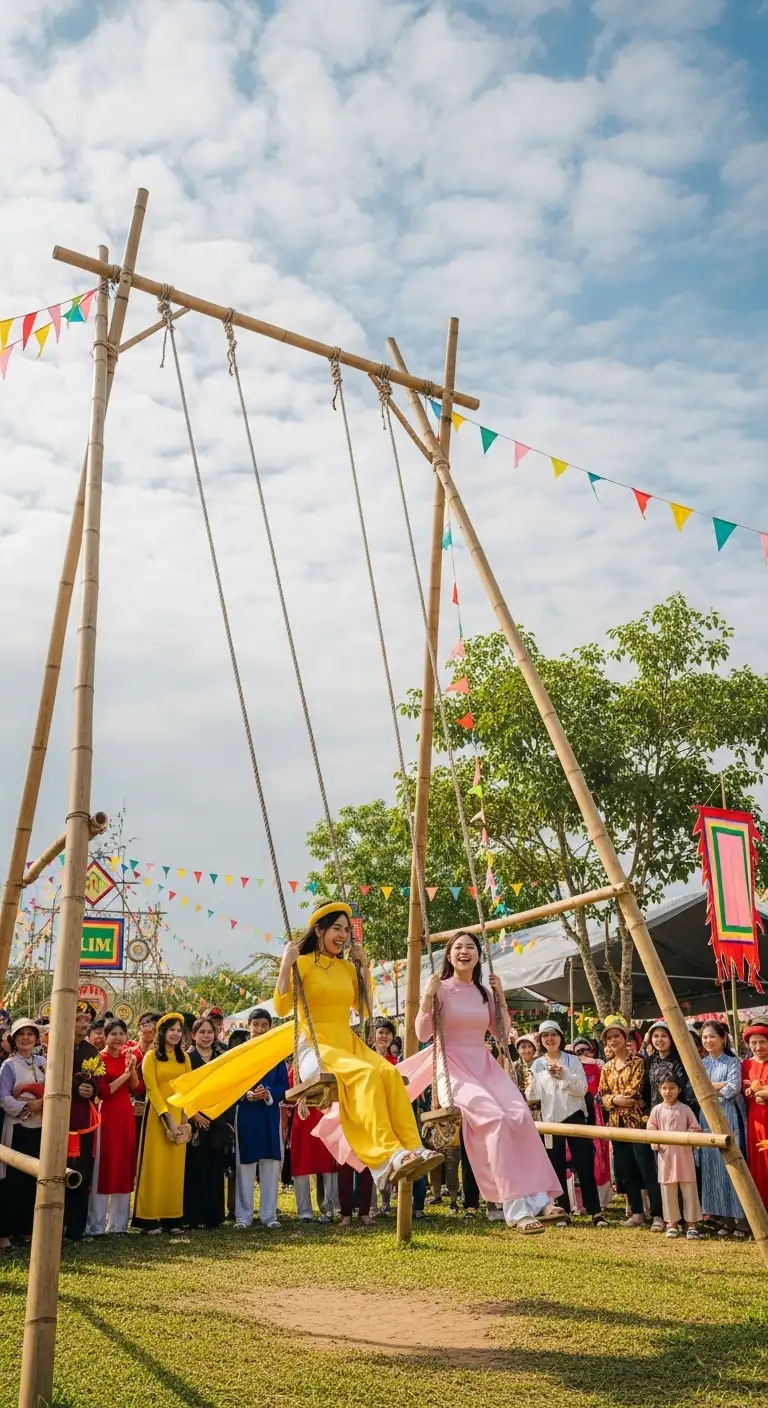Quick Facts
| Data Field (Title) | Content | Icon/Note |
|---|---|---|
| Official Vietnamese Name | Lễ hội Lim | Often referred to as Lim Singing Festival. |
| Location | Lim Hill and surrounding villages (especially Nội Duệ), Tiên Du District, Bắc Ninh Province, Vietnam. | Approx. 20 km from Hanoi. |
| Date | 13th day of the 1st Lunar Month (Main Day) | Usually falls in late February or early March. The festival often runs for 2-3 days (12th-14th). |
| Significance | Celebration and preservation of Quan Họ Folk Singing, a UNESCO Intangible Cultural Heritage of Humanity. | Honors the region's cultural heritage and the spirit of spring. |
| Focus | Music, courtship, traditional games, and spiritual ceremonies. | A vibrant display of Kinh Bắc culture. |
I. Overview and Cultural Significance
The Cradle of Quan Họ
The Lễ hội Lim is one of the most famous and culturally rich festivals in Northern Vietnam, held annually in the historical Kinh Bắc region (now Bắc Ninh province). Its primary purpose is to celebrate and preserve Quan Họ folk singing, a unique, complex art form recognized by UNESCO.
The festival marks a beautiful start to the new lunar year, drawing thousands of visitors and singers who gather to immerse themselves in the region’s spiritual and artistic traditions.
Honoring the Founders
The festival is organized around Lim Hill and its pagodas, which serve as the central spiritual site. Ceremonies are held to honor a revered figure, Hiếu Trung Hầu (Nguyễn Đình Diễn), who is traditionally credited with popularizing the Quan Họ singing tradition in the 18th century.
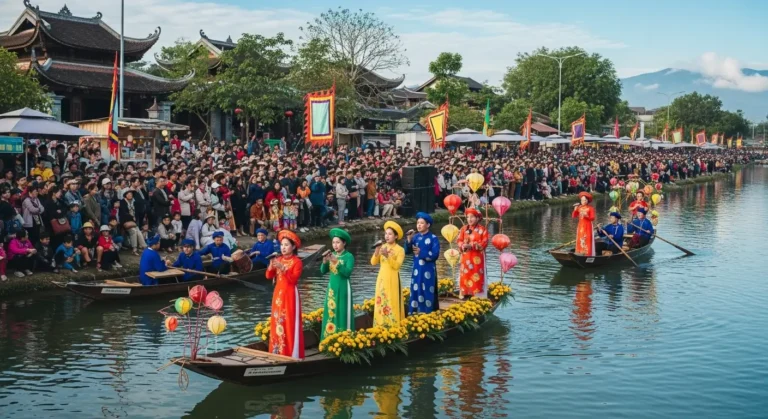
II. The Main Attraction: Quan Họ Folk Singing
The entire festival is an enchanting cultural space dedicated to this unique vocal tradition.
The Performance Style
Quan Họ is traditionally performed by pairs of male singers (liền anh) and female singers (liền chị). The singing is antiphonal, meaning one pair sings a phrase and the other pair responds, creating a captivating dialogue.
Setting: Performances take place in various beautiful settings, including:
On Boats: The most iconic scene, where liền anh and liền chị perform traditional songs while gliding along the Tiêu Tương River.
On Lim Hill: In communal tents and on the main stage.
In Pagodas: As part of the ceremonial events.
The Courtship Ritual
The songs are not merely performances; they often take the form of intricate courtship dialogues. They express a range of emotions—from shyness and longing to invitations and farewells—all delivered with poetic lyrics and sophisticated melodies.
Betel and Areca: A traditional gesture of welcome is often seen where the female singers invite guests to join them by offering betel and areca nuts in a beautiful tray.
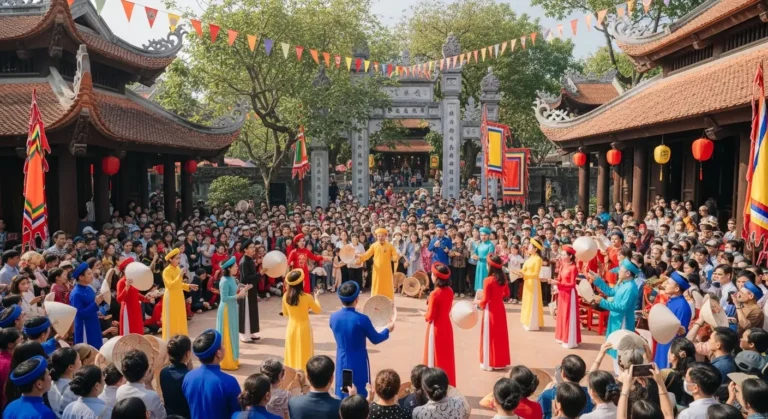
III. Festival Activities
The Lim Festival is divided into two parts: the ceremonial section (lễ) and the festive activities section (hội).
1. Ceremonial Events
On the 12th and 13th day of the lunar month, solemn rituals take place at the pagodas and communal houses:
Incense Offering: Ceremonies are held at Hong An Pagoda and the tomb of Hiếu Trung Hầu to pray for peace, happiness, and a good harvest.
Procession: A colorful and dignified procession featuring villagers in traditional costumes, floats, and singing groups.
2. Traditional Folk Games
The festival ground on Lim Hill comes alive with a variety of exciting folk games that showcase local cultural features:
Wrestling (Đấu Vật)
Human Chess (Cờ người)
Blind Man’s Buff (Bịt mắt bắt dê)
Swinging (Đánh đu)
Pot-breaking (Đập niêu) – A game where blindfolded players attempt to break clay pots.
